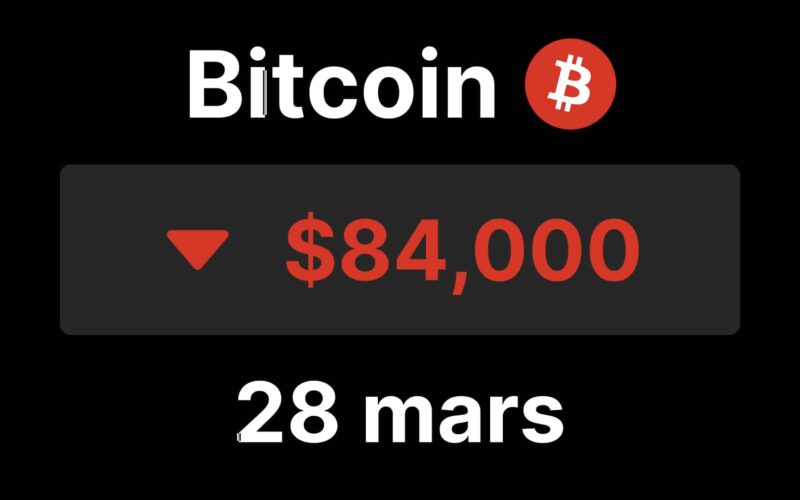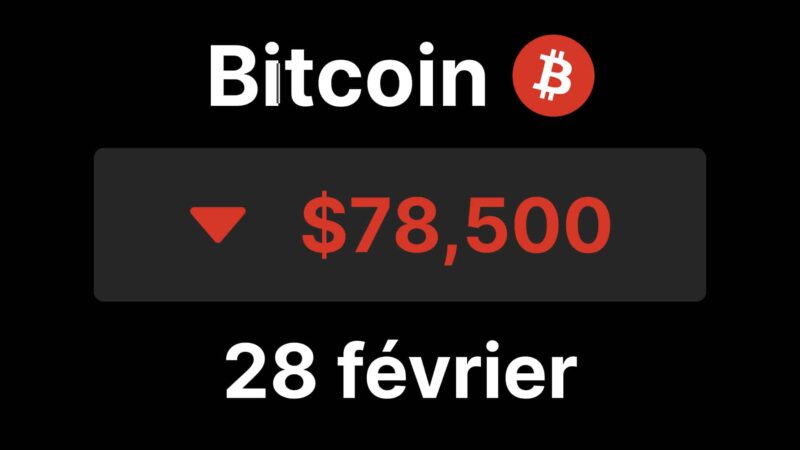US Inflation Data Spurs Crypto Market Uncertainty
The latest data on US inflation is dampening investor enthusiasm, causing a 5% drop in crypto market capitalization in a single day. Bitcoin manages to limit the damage with a 3% decline, while altcoins experience larger losses, surpassing 6% in 24 hours.
Despite a tense macroeconomic environment, some analysts believe that Bitcoin still has bullish potential, with a possible target of $150,000 by the end of the year.
The cryptocurrency market is experiencing a new decline as recent US inflation data dampens investor enthusiasm. The global market capitalization has dropped by 5% in a single day, falling to $2.84 trillion.
Rising Inflation: A Key Indicator Above Expectations
The Core PCE index, the main gauge of inflation monitored by the Federal Reserve, showed a 0.4% increase in a single month, surpassing economists’ expectations of 0.3%. On an annual basis, the increase reached 2.8%, slightly higher than the anticipated 2.7%.
These data curb hopes of rate cuts as early as May. While not a strictly bearish signal, they weigh on risky assets, particularly cryptocurrencies. Bitcoin manages to limit the damage with a modest 3% decline, trading around $84,200. On the other hand, altcoins like Ethereum, Solana, and XRP plummet by over 6% in 24 hours.
Bitcoin as a Hedge Against Uncertainty?
According to Matt Mena, a strategist at 21Shares, this context is far from catastrophic for digital assets:
This is neither a bullish scenario nor a distinctly bearish one. We remain in a cautious zone, but the markets are holding up well.
He notably highlights the stability of S&P 500 futures contracts, which remain above the psychological threshold of 5,700 points.
Mena believes that this resilience demonstrates Bitcoin’s unique role in the current macroeconomic environment. Designed as a state-independent store of value, the asset seems well-equipped to face inflation and monetary uncertainties.
Mixed Outlook for the Second Quarter
The arrival of the second quarter marks a crucial period for cryptocurrencies. Historically, Bitcoin has often experienced a resurgence in strength between April and June. However, analysts at Bitfinex warn that the current environment, marked by trade tensions and persistent inflation, could reverse this trend.
Monetary policy is not the only lever to watch. Regulatory developments, such as the appointment of a new SEC director and discussions on stablecoins, could reshape the landscape in the coming months. The Trump administration has recently expressed support for a national bitcoin reserve—a strong signal that reinforces the integration of the crypto sector into economic policy debates.
A Bullish Scenario Still Possible
Despite the turbulence, Matt Mena maintains an optimistic medium-term view. According to him, Bitcoin could nearly double by the end of the year. A breakthrough of the resistance levels between $90,000 and $100,000 would pave the way for a new all-time high above $108,500, with a potential target of $150,000.
In a tense but catalyst-rich climate, cryptocurrencies remain at a crossroads—between macroeconomic caution and explosive growth potential.




